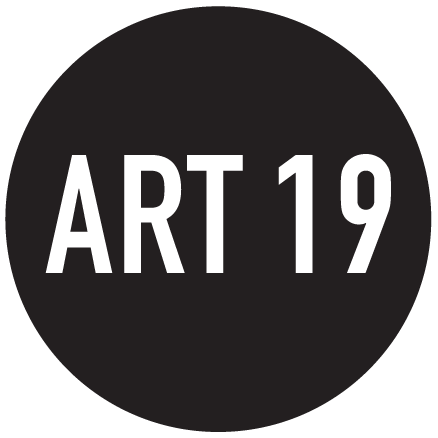Far out magazine : Teacher, Not Muse: Tate Modern’s Yoko Ono ‘Music Of The Mind’ (by Lucy Harbron)
Photograph of Clay Perry
“Collect sounds in your mind that you have overheard through the week. Repeat them in your mind in different orders one afternoon,” reads one of the many cards from Yoko Ono’s Tangerine scattered around the new and expansive exhibition at Tate Modern. As visitors move through the rooms, there are holes cut out of paper that you’re instructed to look through, directions telling you to shake hands with strangers, hammers nails into walls, sit a while in a black bag, or merely imagine something in your mind. Touring the gallery is less of an experience for the eyes as it is for the mind, revealing Ono as a teacher, not the muse she’s too often limited to.
One of the most insidious and boring sects of music is the crowd of typically male classic rock fans who want to limit the role of women at best and utterly villainise them at worst. With their grip all too often smothering the retelling of music and cultural history, Yoko Ono’s career has been lost in a shadow of her husband’s or shrouded by screams that she broke The Beatles up or was nothing more than a distraction sat on a speaker in some studio. Throughout Music Of The Mind, the Tate turns those voices down to turn the sound of Ono’s own remarkable and expansive career up.
Throughout the space, sounds echo. Whether it be clips from Ono’s own musical performances from as early as 1961 or the sounds of visitors dutifully following her many instructions, the space is full of noise. “The only sound that exists to me is the sound of the mind,” reads the welcoming wall, and that’s exactly what fills this exhibition.
In the first rooms that deal with the beginnings of her career, there is the necessary reminder that Ono’s interaction with sound and music long outdates her marriage to John Lennon. There’s a misconception that by the time the Let It Be sessions or Ono and Lennon’s collaborations came around, the artist merely grabbed a mic and decided to give it a go. Tate’s efforts feel like a vital redirection and rebalancing of Ono’s history. As they highlight her collaborations with the likes of John Cage, they spotlight her place in the exciting sect of avant-garde artists who used sound as a canvas. So many of the instructions from her landmark book deal with sound, recording sound, and playing sound. In the years since its release, Ono’s guidance has inspired many pieces of music, including the recent track ‘Secret Piece’ by Clipping.
Credits: Far Out / Photograph © Clay Perry / Artwork © Yoko Ono
While I’m hesitant to even mention Lennon too much as this exhibition maintains that it is very clearly about Ono, not her partner, walking around the rooms left me with a niggling annoyance at the overwhelming misunderstanding towards Ono. Long before even meeting Lennon, not only was Ono a musical artist but also clearly incredibly interested in making art that inspired art. She was a teacher and a leader, so why has she been so villainised because Lennon clearly became an inspired follower of her many lessons?
Too often reduced to being merely a muse to his career, it’s clear that Ono was, in fact, the master, doubtlessly inspiring The Beatles and Lennon’s deeper dive into experimentation as she brought her avant-garde experience and vastly creative brain into their realm. To anyone who attempts to brush Ono off as merely a distraction or a destructive force, I’d implore them to go see this exhibit and open their mind to the fact that the Fab Four were utterly privileged to get to have such access to this pioneering force.
But that’s enough on that, back to the artist at hand. Beyond her engagement with sound, the Tate has managed to curate an extensive and intricate look at her various influences and engagements without the exhibit feeling too long or overwhelming. Ono’s passion for promoting peace is beautifully woven throughout. The opening walls mention her childhood as she was sent away from Tokyo to the country to escape attacks on major cities during World War Two, where she nearly starved in poverty. With this knowledge, her repeated engagement with the sky feels like a continued fascination with peace and how something so natural and beautiful can become weaponised, like in the Hiroshima attack as the atomic bomb fell from above.
Evolving from instructions to merely look up at the sky through a hole in a canvas into more visceral depictions like a single bullet hole smashing through glass, made after Lennon’s assassination, or the army helmets hanging from the ceiling, full of puzzle pieces decorated with a small piece of the sky, captured from directly above the gallery; her enduring interest in peace and violent is beautifully approached. As I left, I found myself clutching my puzzle piece like a gift not just from Ono but from humanity, feeling myself as a small part of it.
Balancing joy and seriousness in equal measure, from the giggles that echo through the rooms as strangers play with her interactive exhibits from the quiet that falls over the room as her Cut Piece film plays, the Tate approaches Ono’s career with exactly the spirit it deserves. Cutting through the noise of misconceptions or tired reductions, they position Ono as the exciting artist she is and always has been and as a vital teacher to so many other artists rather than just a muse to one.
Article published on https://faroutmagazine.co.uk


